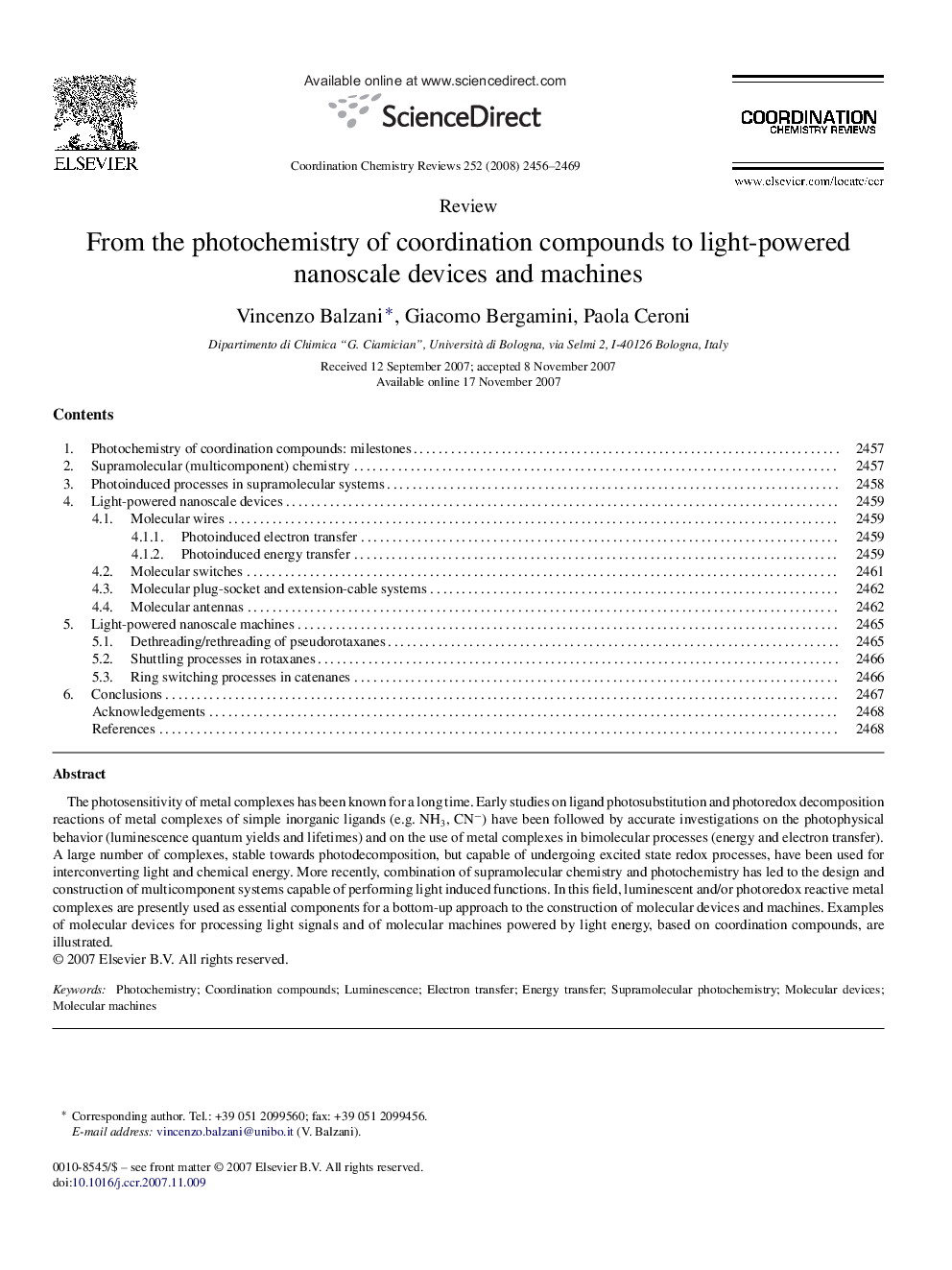| Article ID | Journal | Published Year | Pages | File Type |
|---|---|---|---|---|
| 1300399 | Coordination Chemistry Reviews | 2008 | 14 Pages |
The photosensitivity of metal complexes has been known for a long time. Early studies on ligand photosubstitution and photoredox decomposition reactions of metal complexes of simple inorganic ligands (e.g. NH3, CN−) have been followed by accurate investigations on the photophysical behavior (luminescence quantum yields and lifetimes) and on the use of metal complexes in bimolecular processes (energy and electron transfer). A large number of complexes, stable towards photodecomposition, but capable of undergoing excited state redox processes, have been used for interconverting light and chemical energy. More recently, combination of supramolecular chemistry and photochemistry has led to the design and construction of multicomponent systems capable of performing light induced functions. In this field, luminescent and/or photoredox reactive metal complexes are presently used as essential components for a bottom-up approach to the construction of molecular devices and machines. Examples of molecular devices for processing light signals and of molecular machines powered by light energy, based on coordination compounds, are illustrated.
